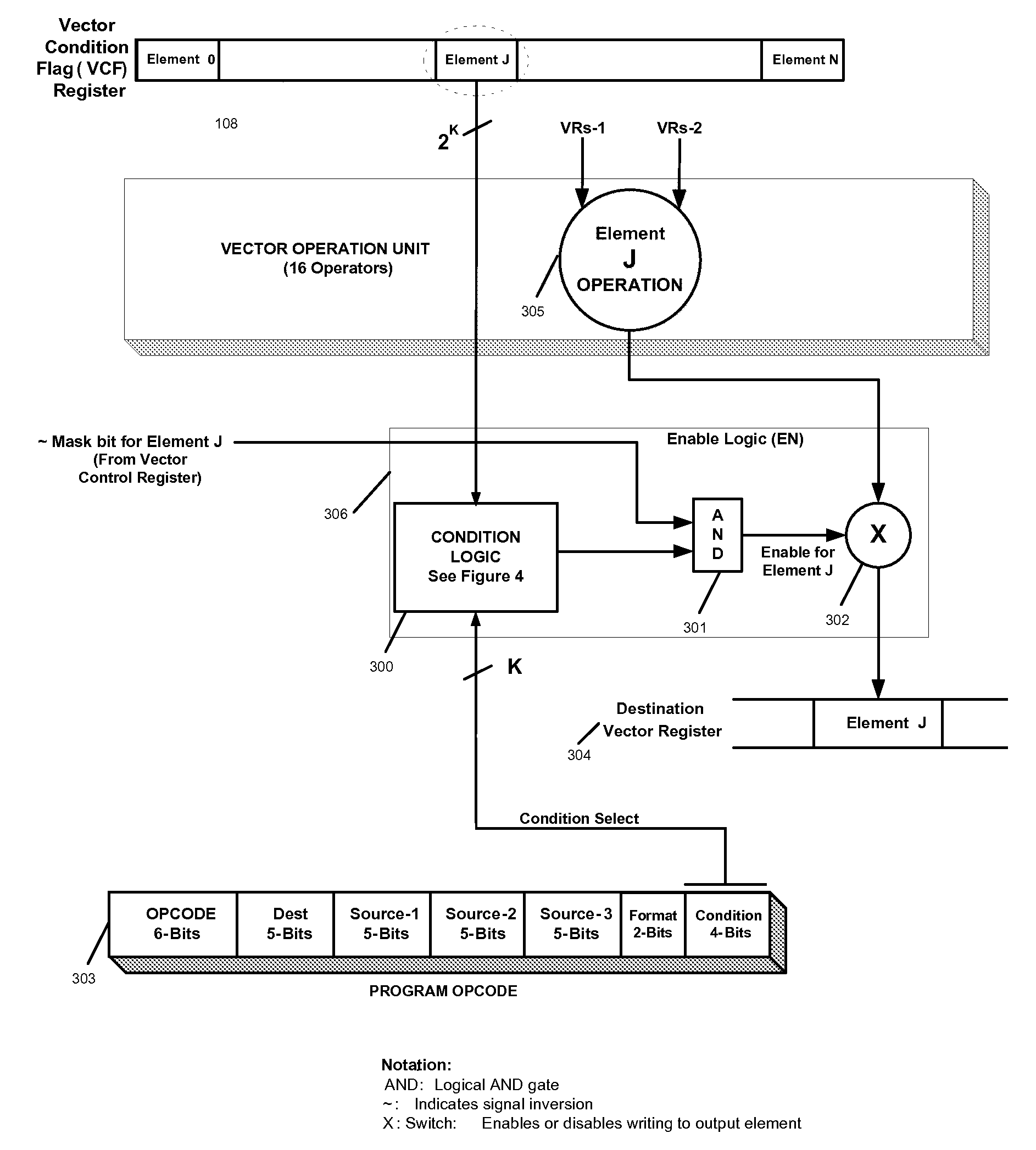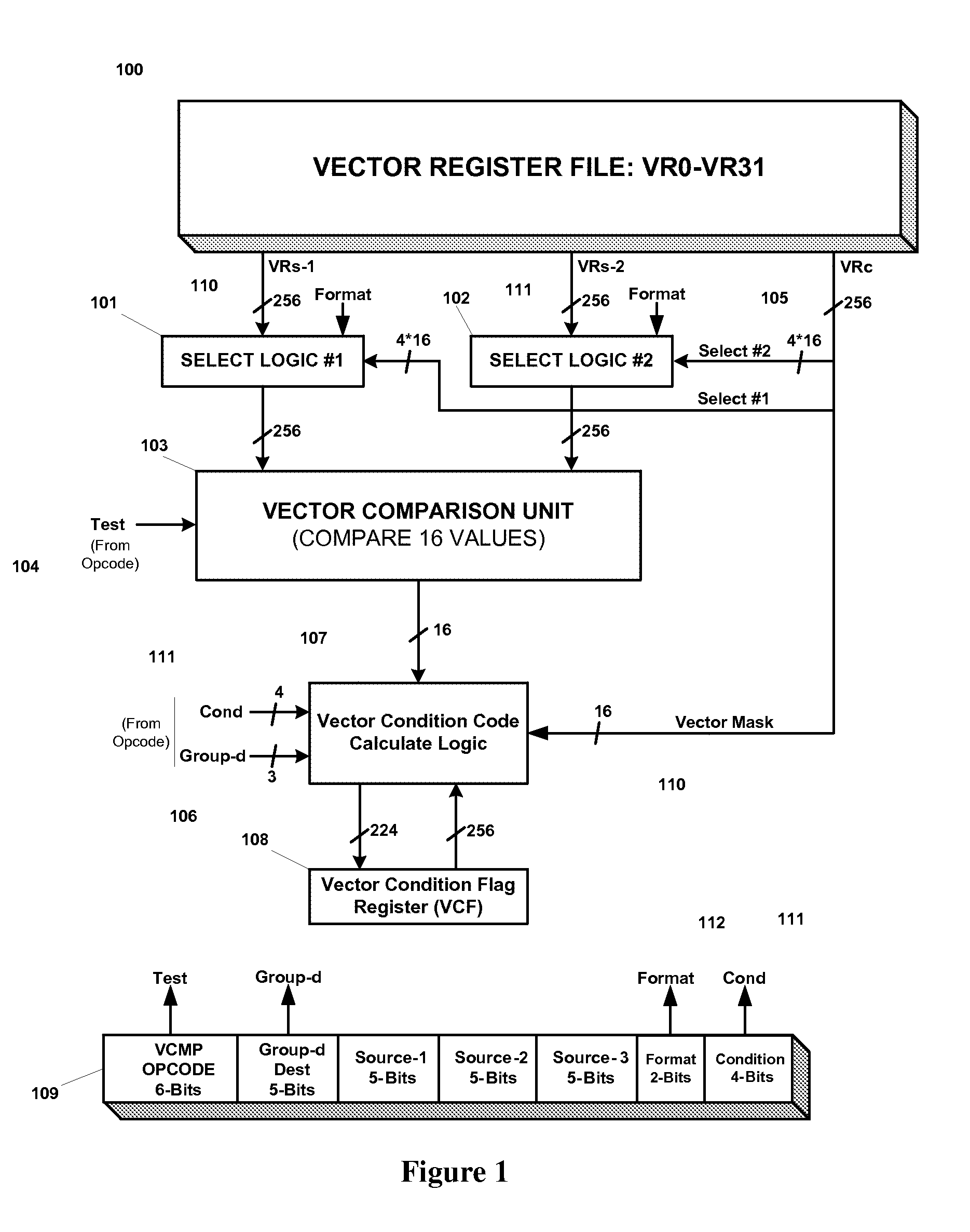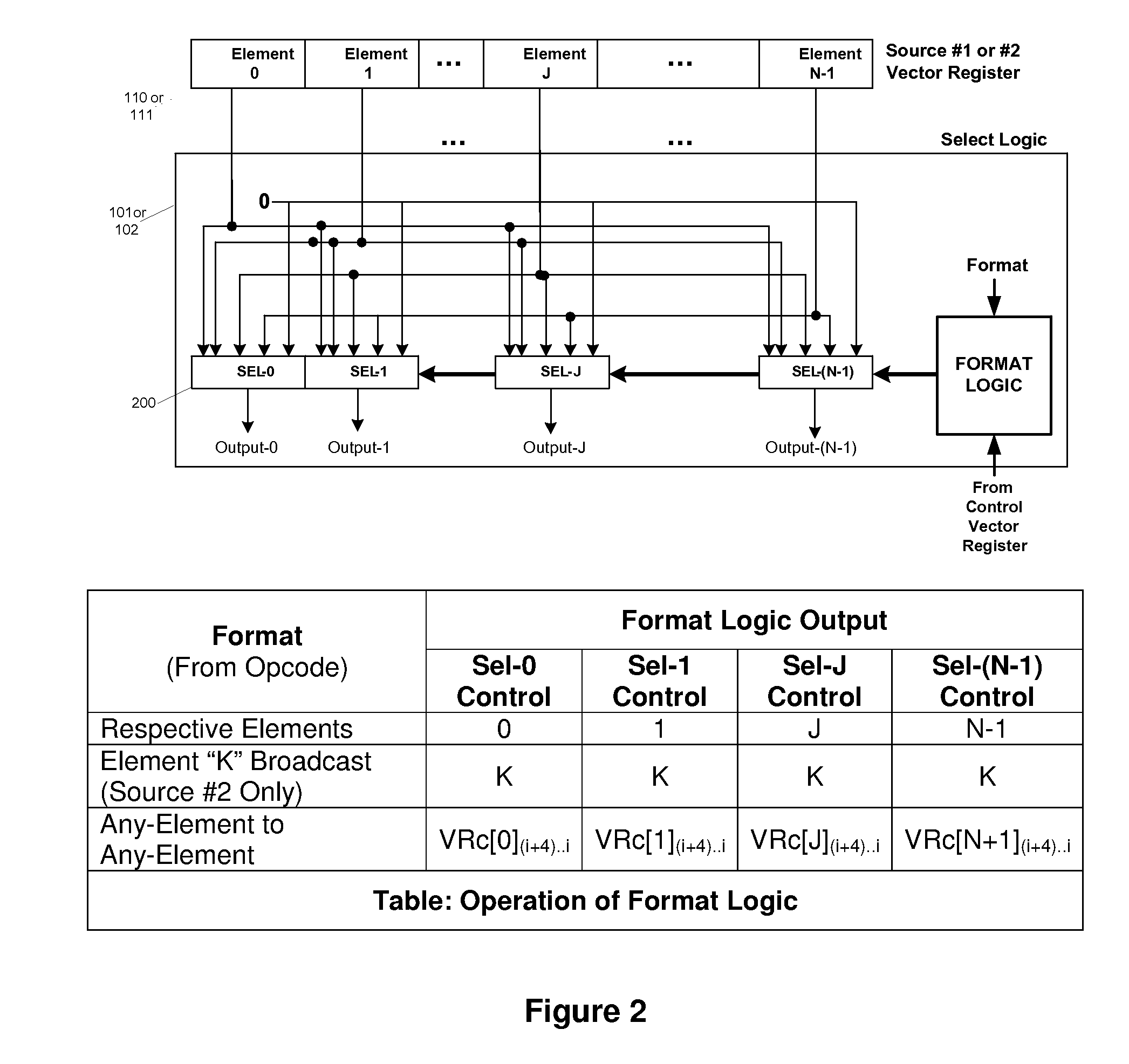Efficient handling of vector high-level language conditional constructs in a SIMD processor
- Summary
- Abstract
- Description
- Claims
- Application Information
AI Technical Summary
Benefits of technology
Problems solved by technology
Method used
Image
Examples
Embodiment Construction
[0026]In the following detailed description of the present invention, numerous specific details are set forth in order to provide a thorough understanding of the present invention. However, it will be obvious to one skilled on the art that the present invention may be practiced without these specific details. In other instances well-known methods, procedures, components, and circuits have not been described in detail so as not to unnecessarily obscure aspects of the present invention.
[0027]The present invention features an efficient method for implementing nested if-then-else high-level language constructs in a single-instruction multiple-data (SIMD) computer system that executes on a vector of N elements for each SIMD instruction. The preferred embodiment performs 16 SIMD operations in a processor having 256-bit wide data memory that is organized as 16 modules of on-chip memory, where each memory module is 16-bits wide. Although a data path of 256-bits and 16-vector elements is exe...
PUM
 Login to View More
Login to View More Abstract
Description
Claims
Application Information
 Login to View More
Login to View More - R&D
- Intellectual Property
- Life Sciences
- Materials
- Tech Scout
- Unparalleled Data Quality
- Higher Quality Content
- 60% Fewer Hallucinations
Browse by: Latest US Patents, China's latest patents, Technical Efficacy Thesaurus, Application Domain, Technology Topic, Popular Technical Reports.
© 2025 PatSnap. All rights reserved.Legal|Privacy policy|Modern Slavery Act Transparency Statement|Sitemap|About US| Contact US: help@patsnap.com



